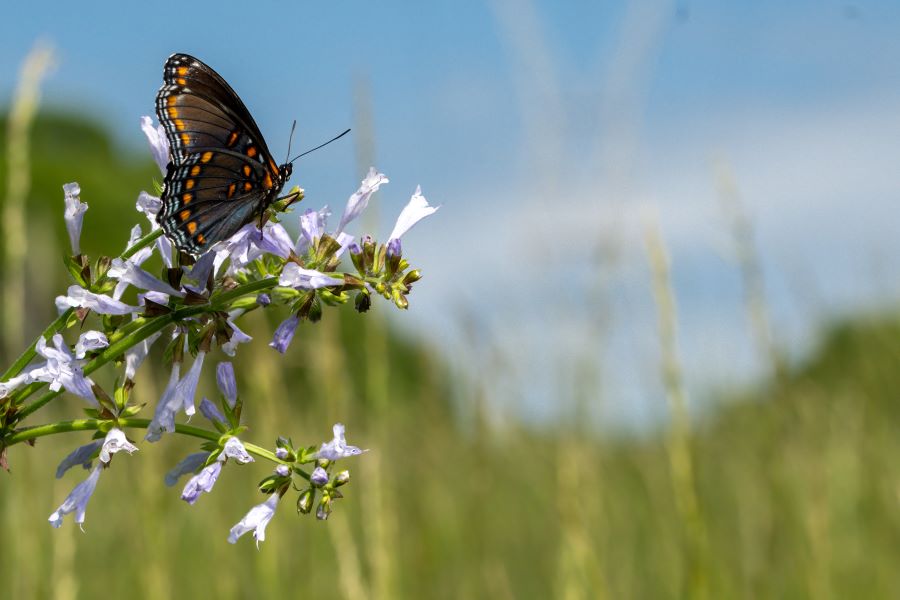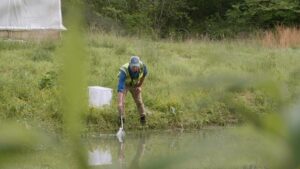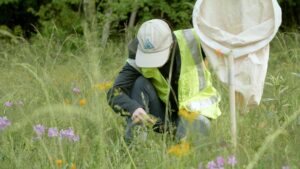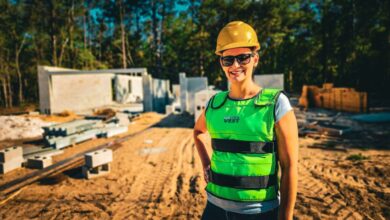The New Biological ROI
By Anand Persad, Ph.D.

Across the nation, utility rights-of-way (ROW) serve as diverse habitats for a variety of native plants, vertebrates, and invertebrate species. These habitats play a vital role in utilities’ sustainable stewardship efforts. Greater focus has been placed on how utilities are managing these areas to not only ensure the health of the countless species that live and rely on them, but also to help utilities better understand the impact of their vegetation management (VM) practices, as well as demonstrate that they’re promoting a healthier environment for future generations.
Maintaining key aspects of ROWs is essential to achieving these goals, particularly where integrated vegetation management (IVM) strategies are used to prevent invasive species from gaining a foothold and competing with native species. A vibrant native plant population is fundamentally crucial to the health of pollinators, invertebrates, and other organisms, and forms the basis for good habitat quality.
While much research has been done on this topic through the years, there has never been a more urgent time for utilities, land management companies, and other similar organizations that oversee ROWs and other green spaces to better understand the health of these areas over time. What we leave behind is now the yardstick for success and prioritizing efforts to identify conditions that need to be addressed, as well as understanding the trends that impact the health of plants, insects and birds in the future. Recognizing that biological return on investment (ROI) is tangible and quantifying biodiversity will enable data-driven cycle management and contribute to the most successful IVM strategies.
The research, science and innovation connection
ACRT Services has been actively involved in environmental stewardship initiatives for years, but in 2020, we decided to take that commitment a step further with the launch of our Research, Science, and Innovation (RSI) department. As the leader of the RSI team, I work closely with a group of ROW Science Advisors (RSAs) to not only partner with utilities on their environmental initiatives but also to identify strategic partnerships and educate our industry about the importance of quantifying the benefits and clarifying the science behind them.
Our team is focused on several efforts currently with utilities nationwide, one of which is a service line called BIOaudit — a comprehensive solution that combines highly trained talent with advanced software tools to analyze virtually every environmental aspect of ROWs and other green spaces. Everything from the soil to the sky and all that lives on it is considered on a seasonal basis over several cycles, from the condition and content of layers starting with soil health, ground cover, herbaceous and grass layers, to other spaces including understanding the off-corridor and adjacent lands and impact on underwire growth. Biological layers give the insight to change and how well a ROW is adapting to changing weather patterns and other impacts. Understanding this information enables utilities to become more proactive and involved in their system green spaces, in addition to measuring and tracking biodiversity to express the benefits of a healthy ecosystem.
BIOaudit consists of several technical components, as well as ongoing surveys and sample collection: field collection software, client portal, and public-facing website. The field collection software enables BIOaudit specialists to create and gather information on ROWs and green spaces.
Data is then loaded into the client portal where utility and project leaders can view, filter, and analyze the data as needed for proactive decision-making and allows VM leaders to compare IVM tactics, products, and materials with those results to make informed decisions about what should be done to promote green space health.
Bringing the field to the decision-making forefront
BIOaudit assessments and the overall work of the RSI team are focused on this end goal: field-derived, data-driven analytics combined with prescriptive tools to help quantify benefits and empower utilities to become better, more informed stewards of their ROWs and system territories. The program advantages are clear as well. Thanks to BIOaudit, VM leaders and the project managers supporting them can:
- Become more proactive with overall VM program planning
- Develop solutions for rare, threatened, and endangered (RTE) species
- Identify invasive plant and insect species that impact ROW ecosystem health
- Support enhancement of pollinator health and native species in ROWs
- More effectively cycle IVM chemicals to combat herbicide resistance
- Understand how ROW tree zones impact power transmission/distribution
- Contribute to and improve overall habitat quality and aquatic resources
- Leverage expertise from USDA-certified soil, plant, and eco-analytic laboratories
By linking the benefits of focusing on the science behind VM and environmental efforts with ongoing field operations, utilities and associated organizations will have a truly comprehensive solution that puts them in a stronger position than ever to deliver on their corporate sustainability and stewardship goals. While RSI is a fairly new department within ACRT Services, we are already at work with several utilities across the country, helping them analyze the biological health of their ROWs and make the decisions needed to make a more meaningful, long-lasting impact.
Anand Persad, Ph.D., is director of research, science and innovation at ACRT Services.




